Famous student protests from around the world
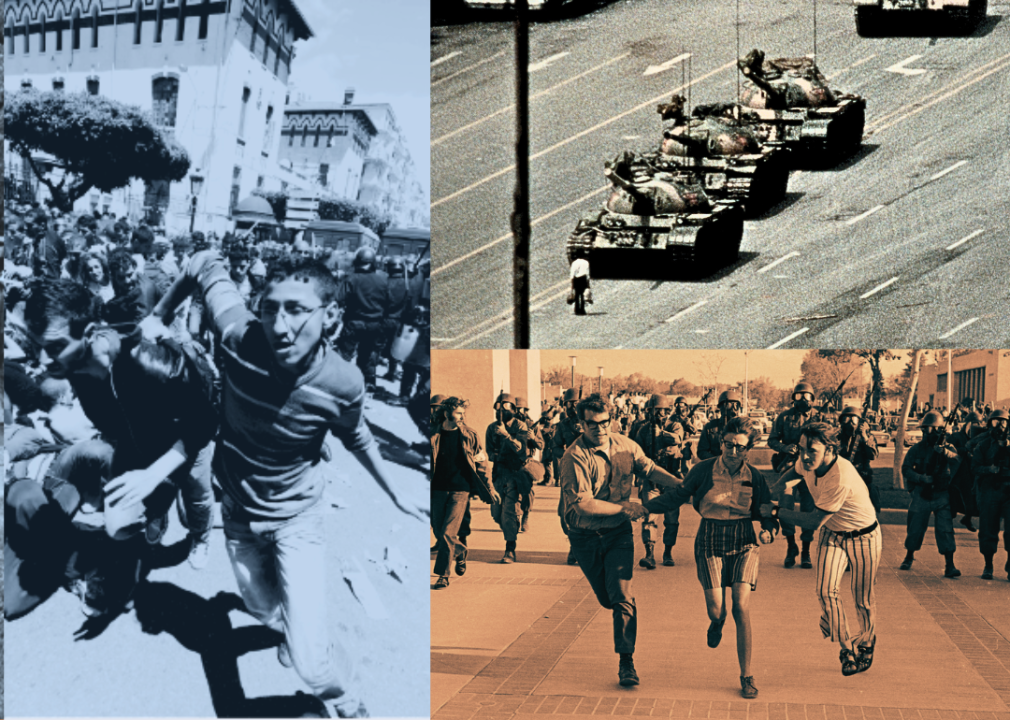
Photo illustration by Stacker // Getty Images
Famous student protests from around the world
A split screen with three photos, including protestors marching with signs that say we condone sit-ins, a woman running in a marathon while men try to stop her, and a person standing in front of military tanks.
Last May’s proliferating pro-Palestine student protests match a storied history of student activism in the United States and around the world.
Colleges across the U.S. are preparing for the students’ momentum, interrupted by the end of the spring semester, to pick up in the coming weeks as students return to campus for the new academic year. Many student activists, both pro-Palestine and pro-Israel, have used the summer to strategize.
From pre-Civil Rights demonstrations in the early 20th century to anti-gun marches last year, young people have gone to great lengths over time to make their voices heard—sometimes risking their lives doing so. Stacker explored famous student protests in modern history dating back to the turn of the 20th century.
Student protesters have come from all races, classes, genders, and nationalities. Their ages have ranged from middle schoolers to graduate students, and protests have occurred across institutions.
The impact of student protest movements has echoed throughout history. The White Rose resistance group in Nazi Germany, founded by medical students, inspired generations of nonviolent protestors, while the 1987 June Democratic Struggle in South Korea dissolved the military regime there and established modern-day Korean democracy.
In the United States, student activists have advocated for a wide range of issues, including women’s rights, LGBTQ+ rights, racial equality, peace, reproductive freedom, affordable education, debt-free tuition, police accountability, gun control, and more. Some of the biggest revolutions across the world have originated with students.
The responses from authorities have varied. In some cases, the young people have been allowed to protest freely, while others have been silenced and suppressed, sometimes violently. History is full of examples of police and military forces breaking up peaceful protests employing batons, tear gas, beatings, and even gunfire—as it is full of instances where protests turned into riots or prevented fellow students from attending class or other school activities.
Keep reading to learn more about famous student protests worldwide.
You may also like: The Black church creating a new village on Chicago’s South Side
![]()
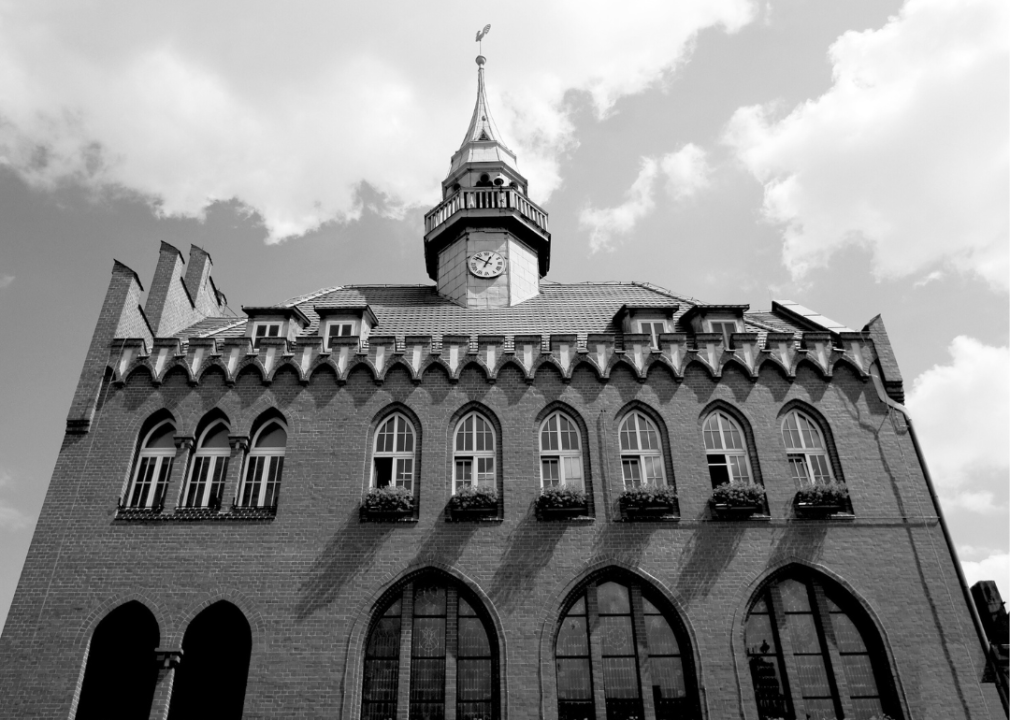
gkordus // Shutterstock
1901: Września School Strike in Poland
An upward view of a stately brick school.
When German school officials announced in March 1901 that religion classes at the Catholic People’s School in Września, an annexed section of Poland, would be held in Germany, more than 100 students protested.
They rejected the German textbooks, suffering detention and beatings as a result. On May 20, 1901, officials dispersed a large crowd of students and parents in front of the school and jailed many of the adults. Over the next three years, trials unfolded while young people continued striking—at least two of whom were beaten to death.
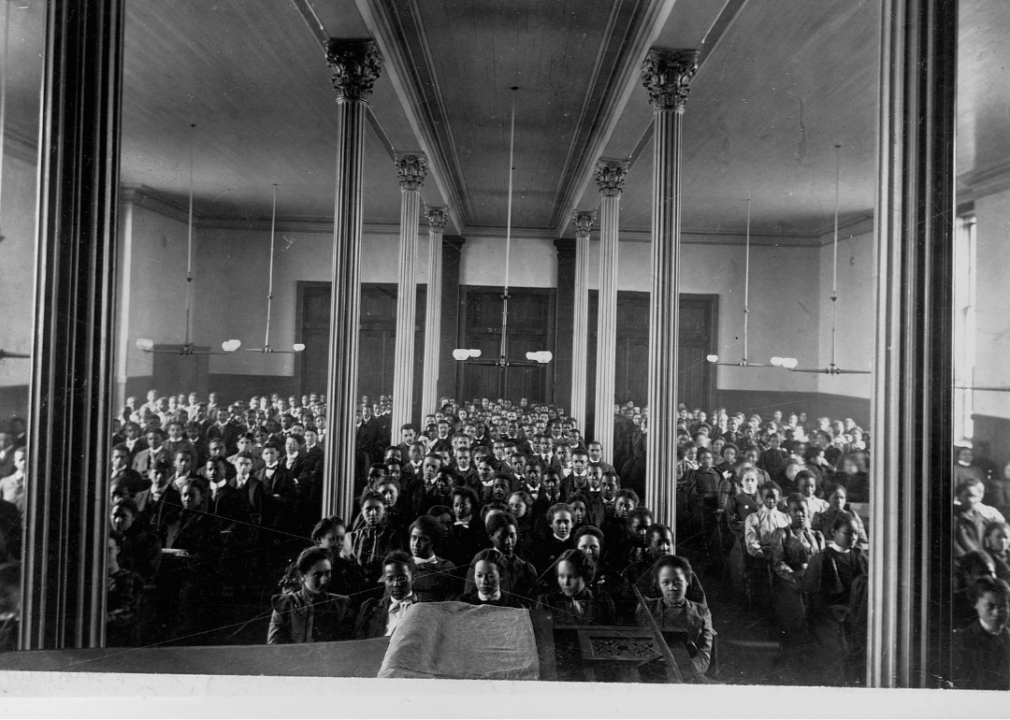
Library of Congress/Corbis/VCG via Getty Images
1924-25: Fisk University protests
A room full of seated students.
American students at the historically black Fisk University in the mid-1920s launched a massive protest against the school’s white president, Fayette McKenzie, who’d taken extreme measures—including shutting down the student newspaper and banning most extracurricular activities—to court donors.
When alumnus W.E.B. Du Bois, then a rising star with a daughter at the college, visited the campus in 1924, he called out the president in a speech from the chapel: “Men and women of Black America: Let no decent Negro send his child to Fisk until Fayette McKenzie goes.” The speech prompted months of student strikes, marking some of the first Black student-led activism and serving as a precursor to the Civil Rights movement.
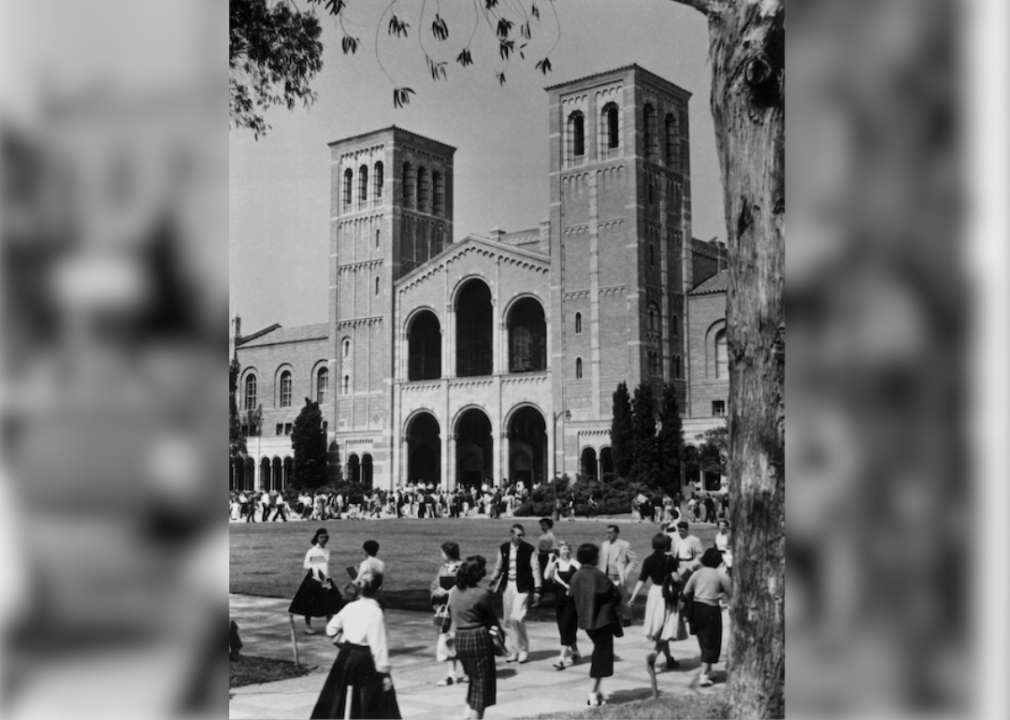
Dick Whittington Studio/Corbis via Getty Images
1930s: UCLA anti-establishment protests
A vintage photo of the UCLA campus full of students walking.
More than 3,000 students at the University of California at Los Angeles in 1934 took to the campus’ Royce Quad to protest after five students were suspended amid the West Coast “red scare” for alleged communist affiliations.
They threw a police officer in the bushes, but police made no arrests. Meanwhile, with another war on the horizon, students at their sister school, UC Berkeley, launched protests of their own.
Royce Quad is the exact location where violence erupted between pro-Palestinian protestors and counterprotesters on May 1.
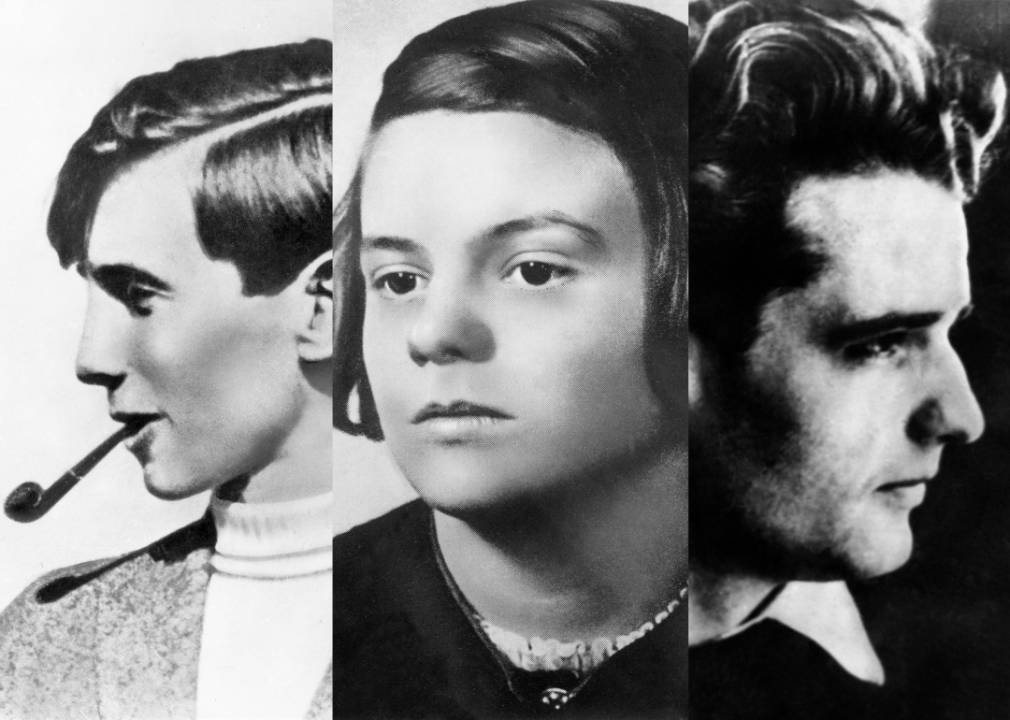
ullstein bild via Getty Images
1942: White Rose Society resistance in Germany
A split screen showing close up photos of Alexander Schmorell, Sophie Scholl and Hans Scholl, three members of the White Rose Society.
As fascism was unfolding in Nazi Germany, a group of students at the University of Munich got together in the summer of 1942 to form a resistance movement that came to be known as the White Rose Society.
The group anonymously handed out fliers admonishing Adolf Hitler’s regime and decrying the persecution of the Jews. In less than a year, however, the Gestapo had arrested most of the organization’s key members and put the young activists on trial in kangaroo courts, sentencing many to death.
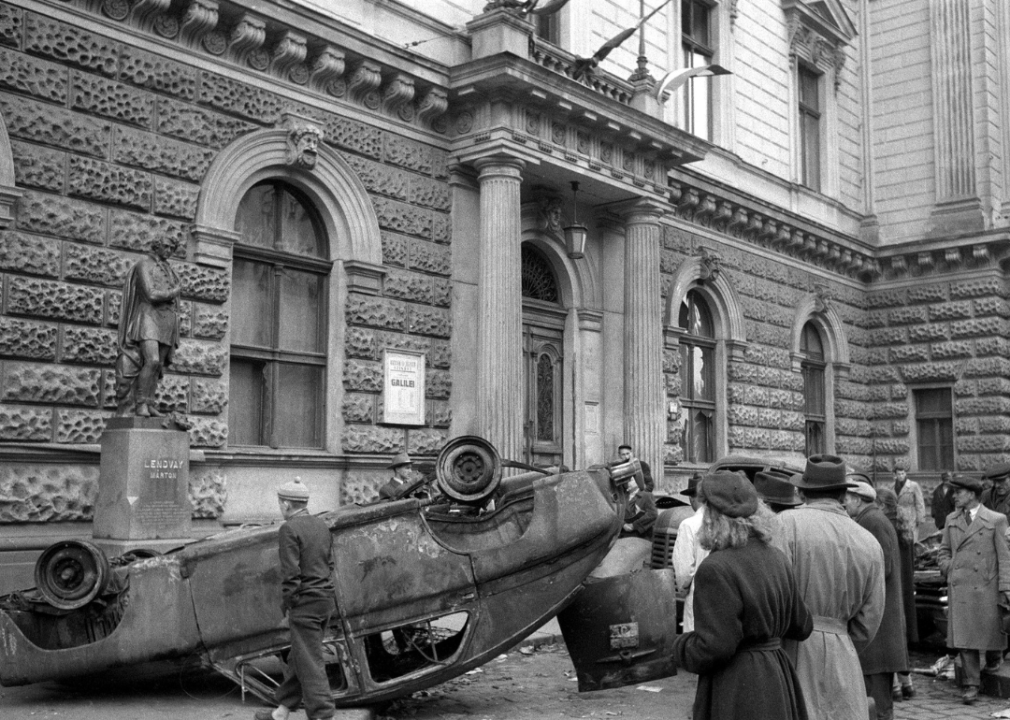
REPORTERS ASSOCIES/Gamma-Rapho via Getty Images
1956: Hungarian Revolution student marches
A crowd of people gather around a car that has been turned upside down and destroyed in front of a building with a statue of Lendvay Marton.
The Hungarian Revolution of 1956 may never have unfolded had an organized group of student protesters not marched through the streets of Budapest on Oct. 23 of that year, carrying loudspeakers and chanting, “This we swear, this we swear, that we will no longer be slaves.”
After reading an anti-communist proclamation demanding an independent Hungary, students stormed the radio building near the Hungarian Parliament, prompting police to open fire. The violence killed one student and marked the first bloodshed in the revolution that ultimately toppled the Soviet government.
You may also like: Across the country, Amish populations are on the rise
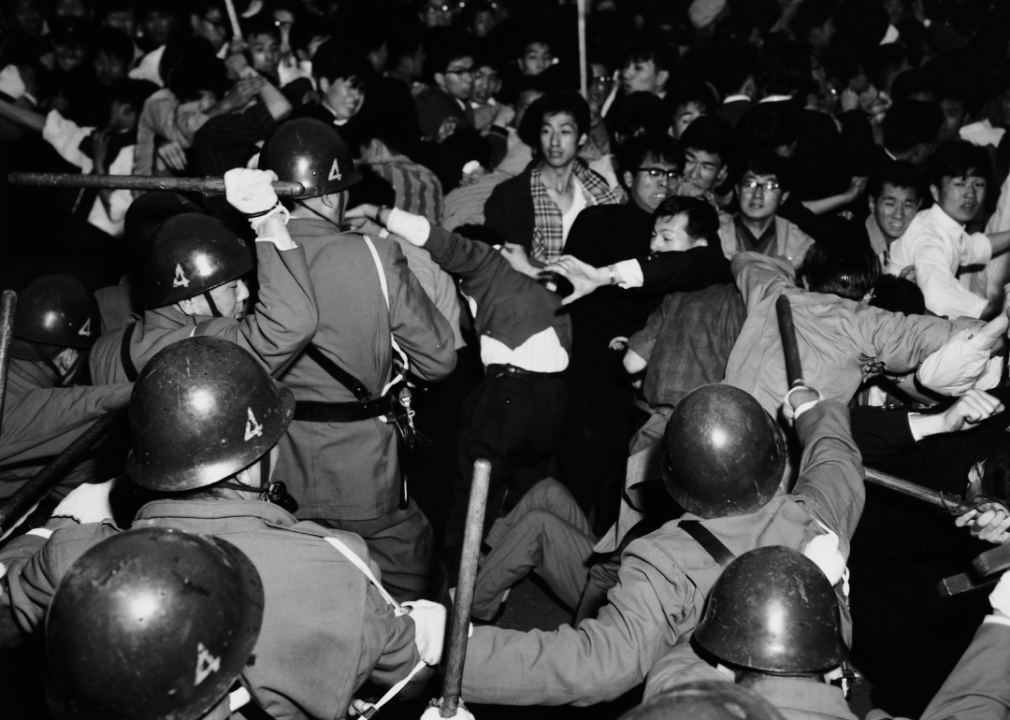
UPI/Bettmann Archive/Getty Images
1960: Japan’s Anpo protests
Police with batons fight protestors in a chaotic scene.
The United States and Japan in 1960 began talks to amend a treaty known as “Anpo”—the Treaty of Mutual Cooperation and Security—which pledged American defensive support in exchange for Japanese land use. The negotiations drew ire from citizens, some of whom worried it would start another war.
Over the course of six months, student protesters broke into the prime minister’s private home, occupied the airport to ground his plane, and faced off with police using water cannons. At one point a University of Tokyo student was killed. The treaty was still ratified but the activists succeeded in pressuring the prime minister to resign.
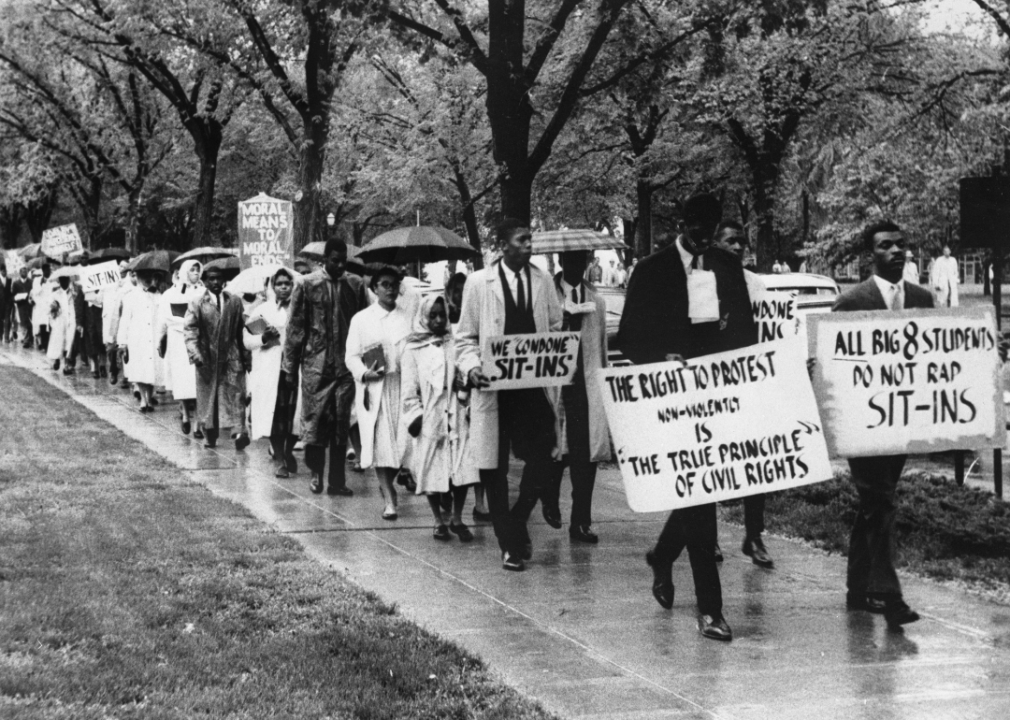
Bettmann Archive/Getty Images
1960-68: American civil rights protests (Greensboro to Columbia)
A line of students marching with signs that say, moral means to moral ends, we condone sit-ins, and the right to protest non-violently is the true principle of civil rights.
While there were student-led civil rights protests in the years that preceded and followed, it was from 1960 to 1968 that the height of college civil rights activism flourished in the United States.
The first major student-led event occurred when a group of Black students refused to leave an F.W. Woolworth store in Greensboro, North Carolina, launching a series of sit-ins throughout the South. Student protests continued over the next eight years; by 1968 they were at a boiling point. The movement, combined with anti-war protests, culminated in an uprising at Columbia University.
There, more than 1,000 protesters took over five buildings and the dean was taken hostage. The events at Columbia were later called “the most powerful and effective student protest in modern American history.”
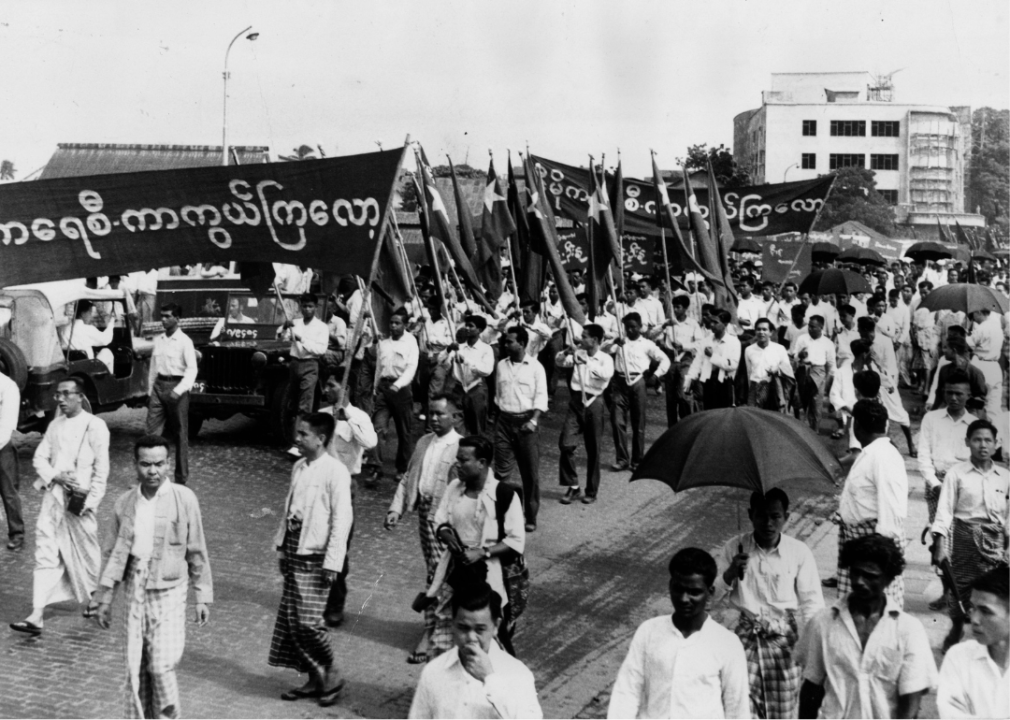
Photo by Keystone/Getty Images
1962: Rangoon University protests in Myanmar
Protestors holding signs and banners march down the street.
On July 2, 1962, after a military coup overthrew parliament, students at Rangoon University in Myanmar (then Burma) gathered to voice their opposition to the new regime led by General Ne Win.
The school had long been a hub for student activism, but Win’s military regime shut it down quickly, killing more than 100 protesters and blowing up the student union building. The universities were closed, and when they reopened four months later, they were under strict government control. Student activists went underground for more than two decades, meeting quietly but not resurging in public with any significant numbers until the 8888 Uprising of 1988, named for Aug. 8, 1988.
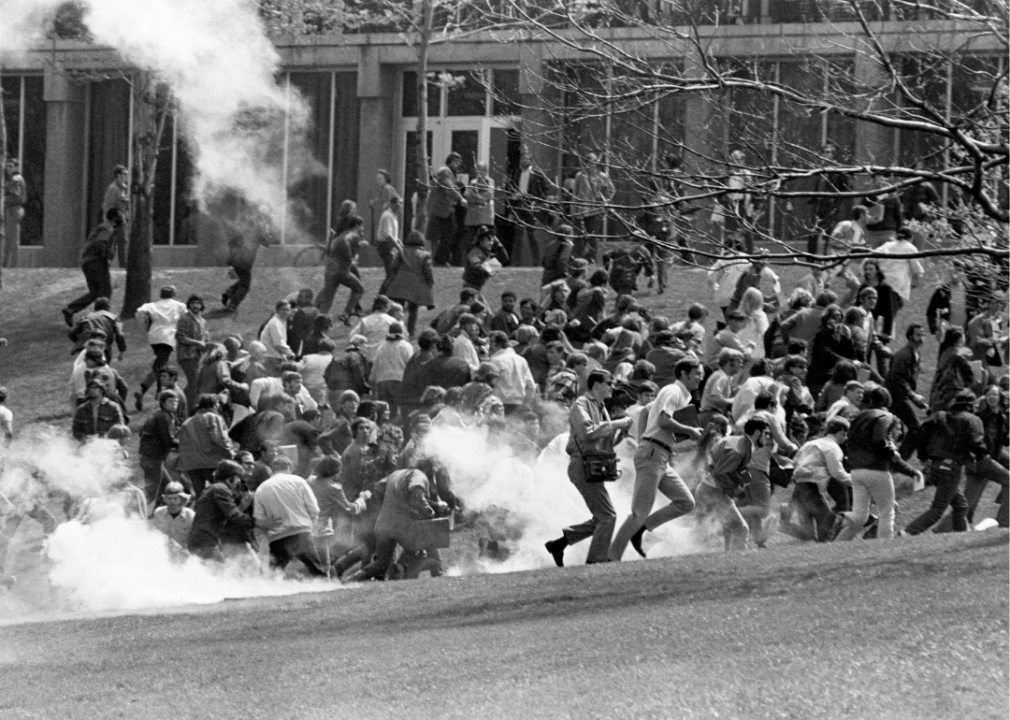
Bettmann Archive/Getty Images
1965-75: US Vietnam War protests (SDS Teach-ins to Kent State)
A chaotic scene of protestors running around after being hit with smoke bombs.
Although the Vietnam War started a decade earlier, it wasn’t until the mid-1960s that the U.S. student movements picked up steam when the Students for a Democratic Society began orchestrating widespread “teach-ins” to voice opposition to the war tactics used by the U.S. government.
The first of these occurred in 1965 at the University of Michigan. By 1970, tensions hit a boiling point with the Kent State tragedy in which four students were killed by the National Guard, inspiring the Crosby, Stills, Nash, & Young hit “Ohio” the following year.
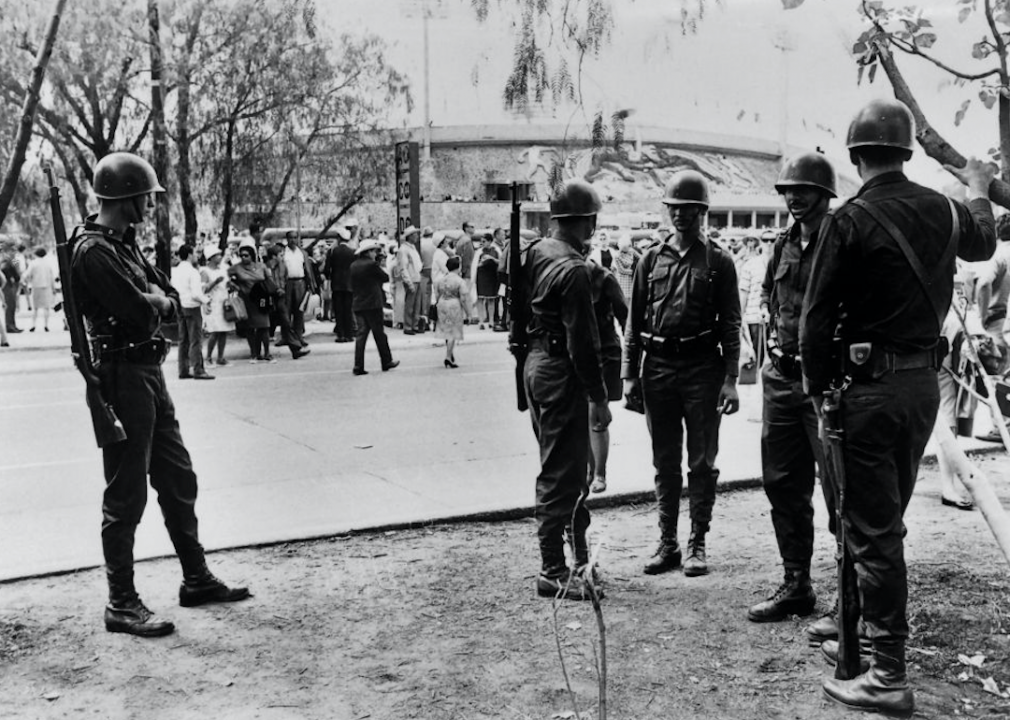
AFP // Getty Images
1968: Tlatelolco Massacre in Mexico City
Several men dressed in military outfits stand and talk as protestors are gathered in the background.
During the summer of 1968, unrest boiled in Mexico City as it prepared to host the Olympics. In an effort to present a good face to the world, President Gustavo Díaz carried out oppressive suppression tactics, particularly with regard to labor unions. Students from multiple universities organized and held numerous demonstrations over the summer.
On Oct. 2, 10 days before the games were to start, a large group marched into the plaza to hold another peaceful protest. This time, troops opened fire, killing 300 to 400 people in what came to be known as the Tlatelolco massacre.
The next day, the government-controlled media painted the incident as a violent student protest; however, many now cite that day as the first in Mexico’s transition to democracy.
You may also like: How gig work can help combat the loneliness epidemic
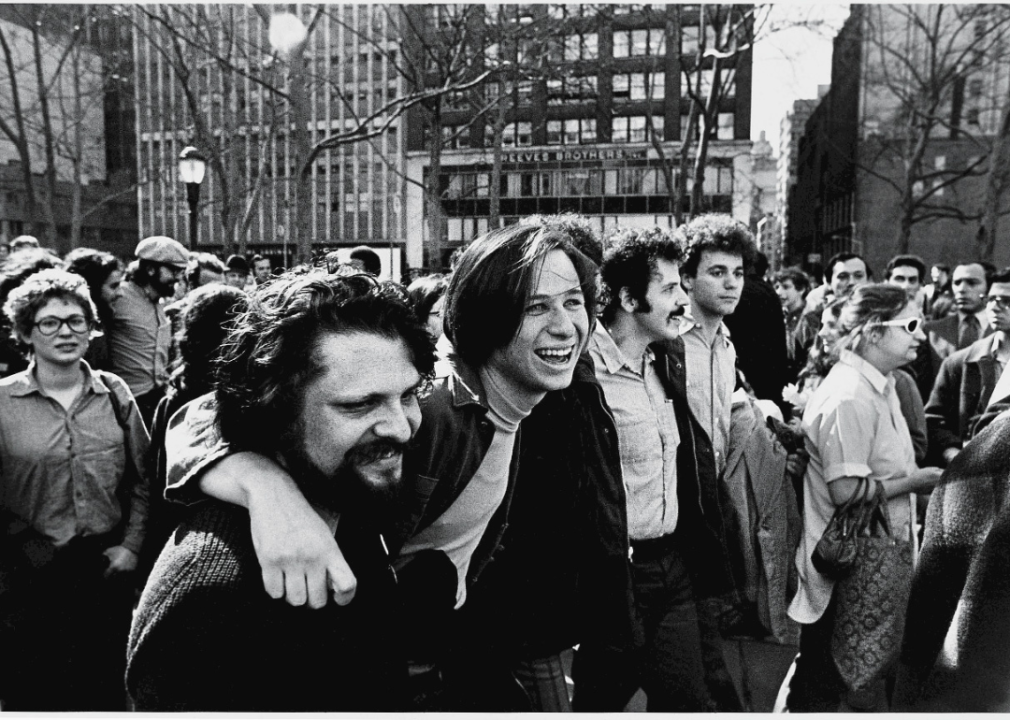
David Fenton/Getty Images
1968-1974: LGBTQ+ protests throughout the US
Crowds of protestors in the street, with a focus on a few smiling people with their arms around each other’s shoulders.
In 1968, a group of students at Cornell University took over the campus union at Willard Straight Hall, marking one of the first major LGBTQ+ student protests in the United States. The Student Homophile League also was formed that year at Cornell, making it the second in the nation after Columbia University.
The following year, the Stonewall riots occurred in Greenwich Village, marking a tipping point in the Gay Liberation movement and fueling nationwide student activism over the next five years.
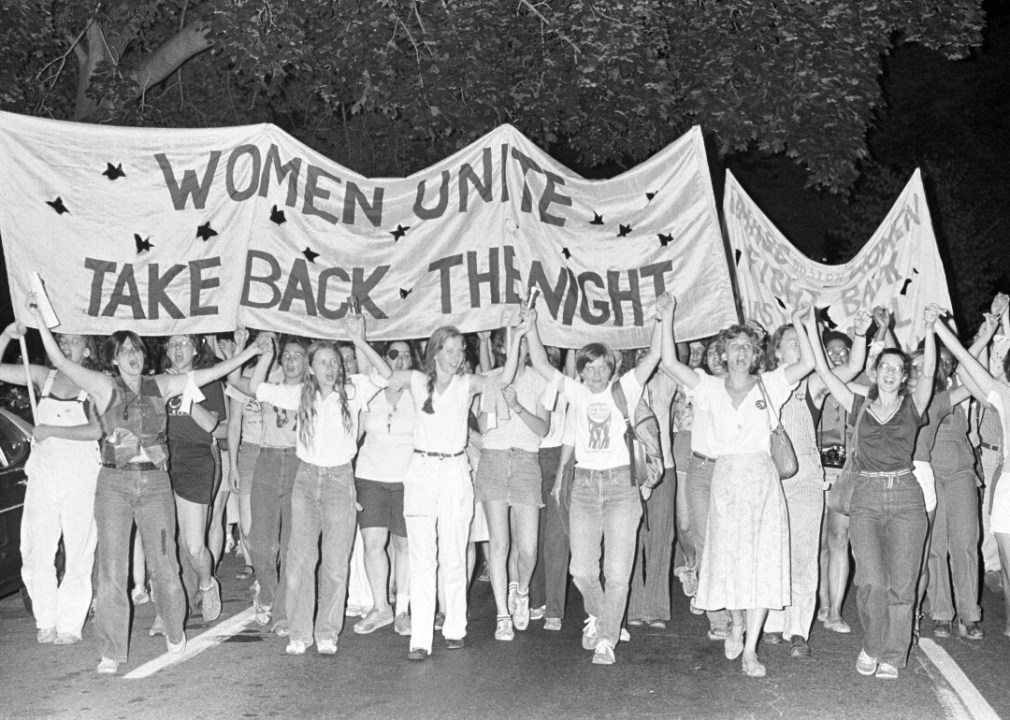
Spencer Grant/Getty Images
1973: ‘Take Back The Night’ protests against sexual violence
A group of women jointly hold up a banner that says Women Unite, Take Back the Night.
With second-wave feminism in full swing, college campuses in the country were primed and ready for women’s rights activism in 1973 when students at the University of Southern Florida held the nation’s first “Take Back The Night” protest.
Taking cues from related protests in Belgium and England, students draped themselves in black sheets and marched around campus carrying broomsticks, imploring the administration to create a women’s center. These student-organized events preceded the Philadelphia march two years later that kicked off the national “Take Back The Night” movement, which continues fighting sexual violence to this day.
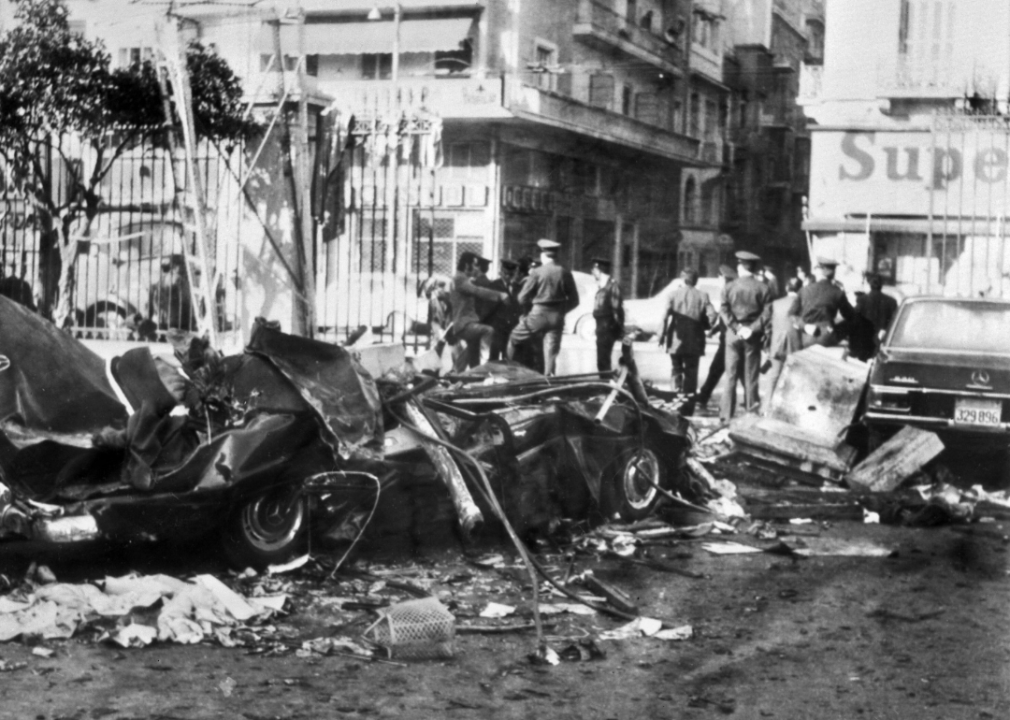
AFP via Getty Images)
1973: Athens Polytechnic uprising
Police stand in the distance with a demolished car in the foreground on a city street.
Tensions were growing in Greece in the fall of 1973 after more than six years of military rule. On Nov. 14 that year, a group of leftist students at Athens Polytechnic staged an impromptu sit-in. What began peacefully quickly spiraled into a full-on student revolt that saw Molotov cocktails thrown and ended with the military driving a tank through university gates.
No Polytechnic students were killed, but 24 civilians died, including several high school students. Following the incident, a high-ranking military officer leveraged the events that unfolded to stage a counter-coup, overturning the dictatorship that had been in power since 1967.
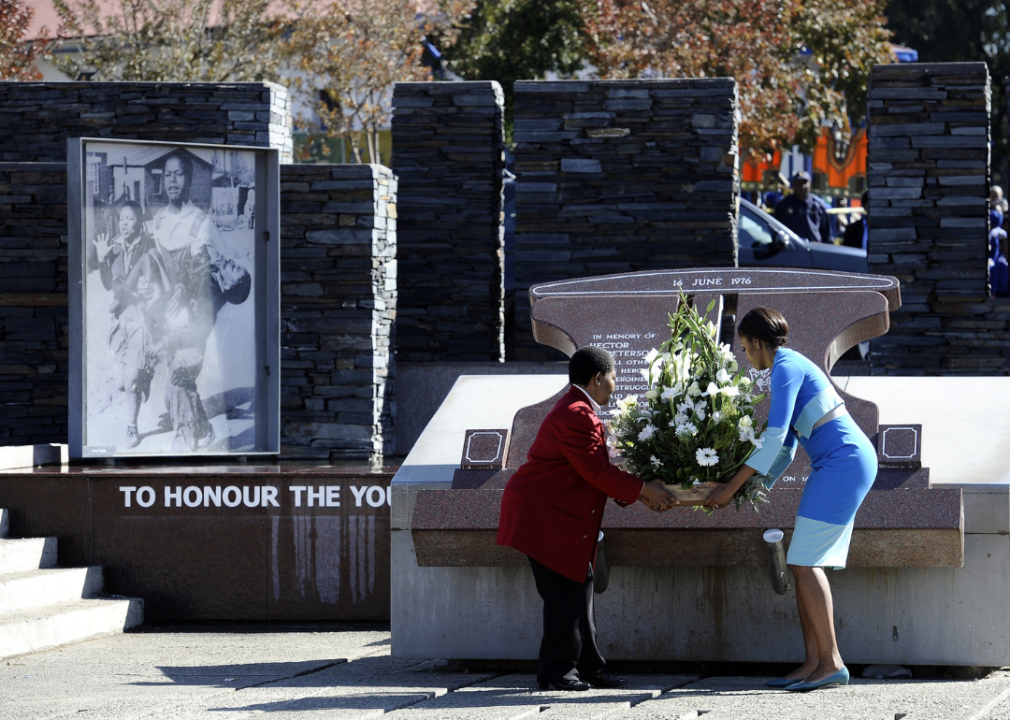
STEPHANE DE SAKUTIN/AFP via Getty Images
1976: Soweto Youth Uprising in South Africa
Two people place a large floral arrangement in front of a memorial.
The Soweto uprising in 1976 marked the fiercest resistance to apartheid the South African government had seen up to that point. It began on June 16 when a group of students, emboldened by the growing Black Consciousness Movement, marched to Orlando Stadium under the guidance of the Soweto Students’ Representative Council.
The immediate impetus was the government’s implementation of Afrikaans as the official language taught in schools. Police responded with swift violence, killing up to 700 people, according to many estimates (though the government reported it as 176). Many South Africans who’d previously been uninvolved with the anti-apartheid movement were enraged by the police violence and jumped in in full force. Some historians cite the uprising as one of the first major pivots that put South Africa on the path to change.
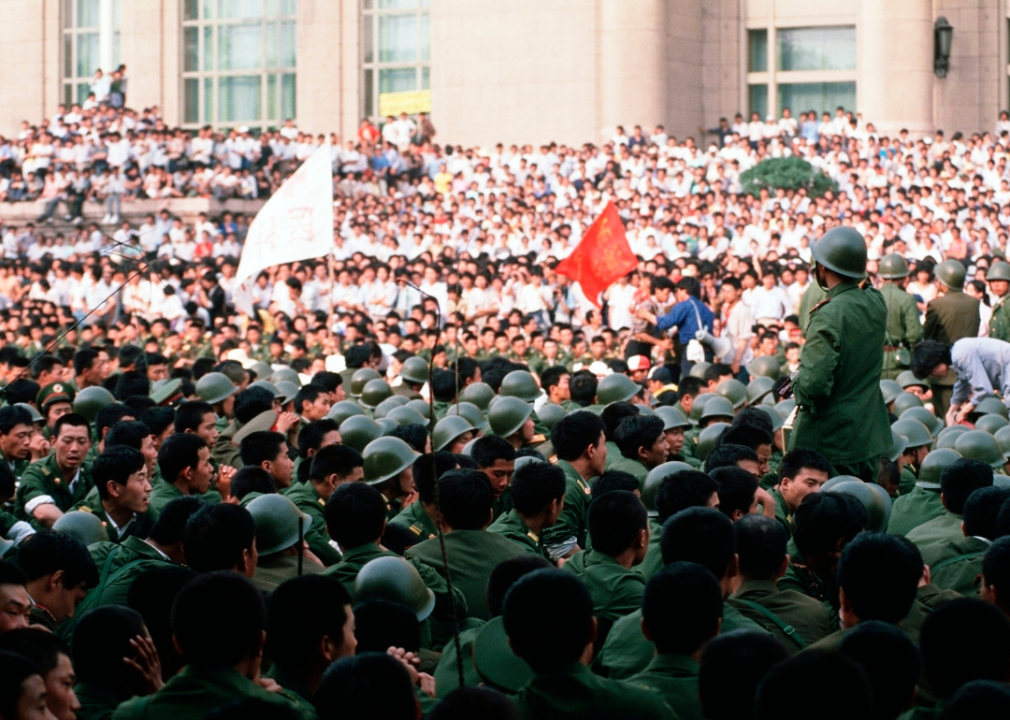
eter Charlesworth/LightRocket via Getty Images
1989: Tiananmen Square occupation in China
Calm crowds fill Tiananmen Square.
The Tiananmen Square massacre in China remains one of the most infamous student-led protests in world history.
It came in the wake of the death of Hu Yaobang, a high-ranking Communist Party official who’d become a reformer later in life. Political organization unfolded as pro-democracy students gathered in Beijing’s Tiananmen Square to pay their respects. The crowd grew as students from other universities caught word and came down, prompting an occupation that escalated over the next six weeks with hunger strikes and other demonstrations.
On May 20, 1989, martial law was declared; on June 2, after more than a month of clashes, the military moved in with tanks, opening fire on hundreds and producing the iconic “Tank Man” photo. Death toll numbers vary from several hundred to thousands.
You may also like: Indigenous data warriors and the ongoing fight for data sovereignty
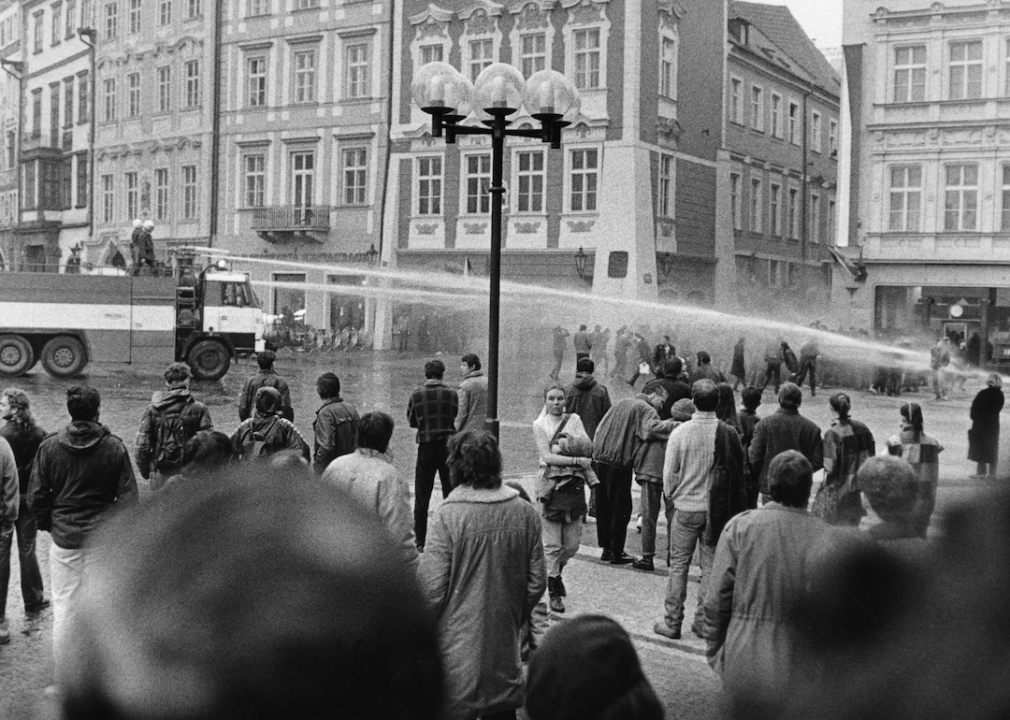
AFP/Stringer // Getty Images
1989: Velvet Revolution in Czechoslovakia
Trucks spray high-powered water hoses at protestors in the street as crowds gather.
Few student activist groups can say they were responsible for toppling a government, but that was the case for the youth of the Velvet Revolution. Most impressively, it was accomplished with almost no violence.
On Nov. 17, 1989, in what was then Czechoslovakia, about 15,000 students entered Prague after days of anti-communist demonstrations. Riot police attacked them, but there were no serious injuries. However, a fake report that a student was killed set the stage for negotiations. Students met with Communist Party officials and continued striking over the next week and a half. By Nov. 29, they had succeeded in changing the Constitution. By the end of the year, a new president had been elected following four decades of one-party rule.
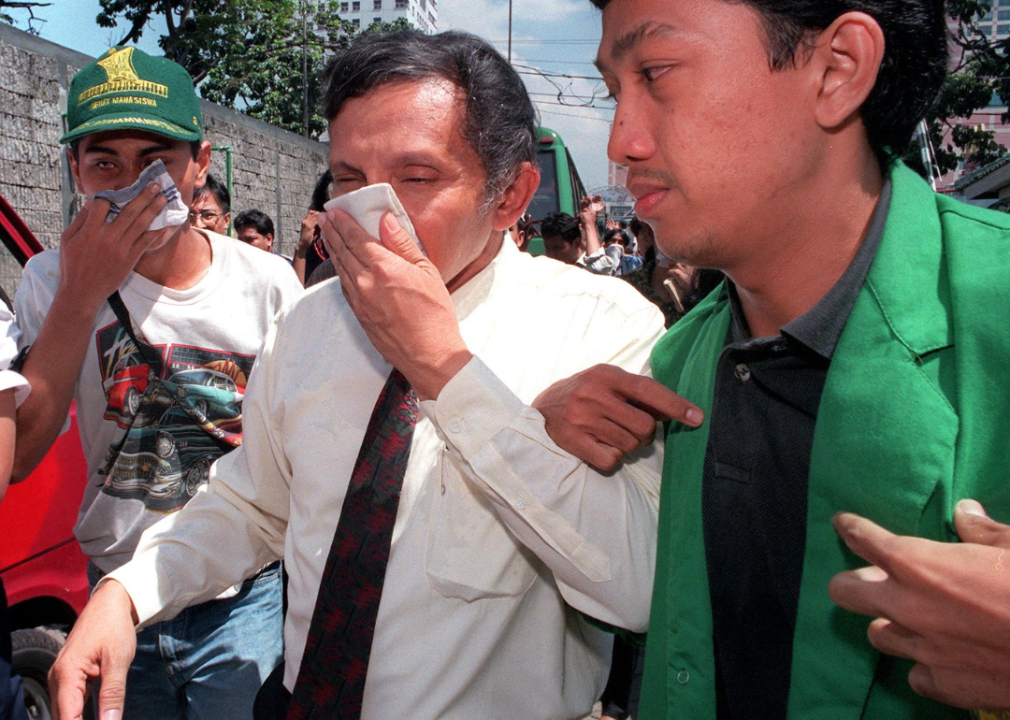
CHOO YOUN-KONG/AFP via Getty Images
1998: Trisakti shootings in Indonesia
People cover their mouths and noses with hankerchiefs.
On May 12, 1998, frustrated by the Asian financial crisis and upset with their government, students at Trisakti University in Jakarta, Indonesia, staged a nonviolent protest, marching from their university to the legislative building. After being stopped by police not far from campus, the students’ march transitioned into a sit-in, but riot police showed up, and students began dispersing. As students were returning to campus, police opened fire from behind, killing four.
Public outrage over the slayings led to the eventual resignation of the president, who had been ruling as a dictator for 30 years.
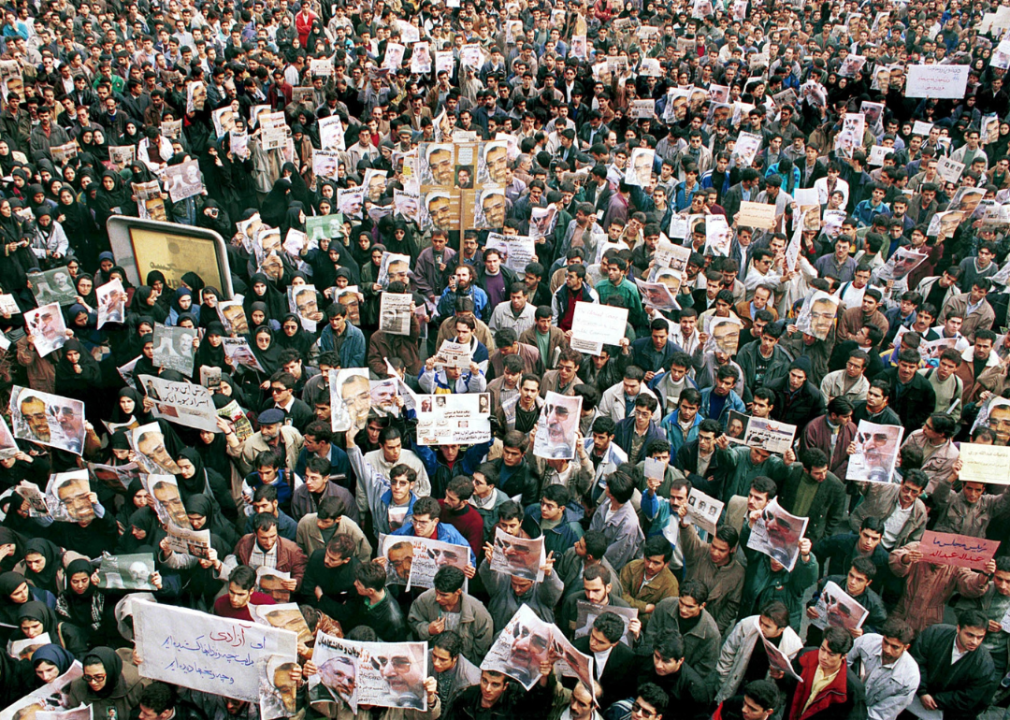
ESLAMI RAD/Gamma-Rapho via Getty Images
1999: Iran student protests over free speech
An overhead view of large crowds holding newspapers in the air.
Dubbed by some as the “Iranian Tiananmen Square,” the response to the 1999 student protests at Tehran University was among the most brutal in student activist history. After a group of students peacefully protested the shutdown of a reformist newspaper, paramilitary officers raided student dormitories, setting beds on fire, breaking windows, grabbing women by the hair, and throwing students out windows.
At least one student died, and as demonstrations broke out nationwide over the next six days, thousands more were arrested. About 70 vanished without a trace. Rather than bringing greater freedom to Iran, the incident led to increased government suppression that included new “thought crime” laws.
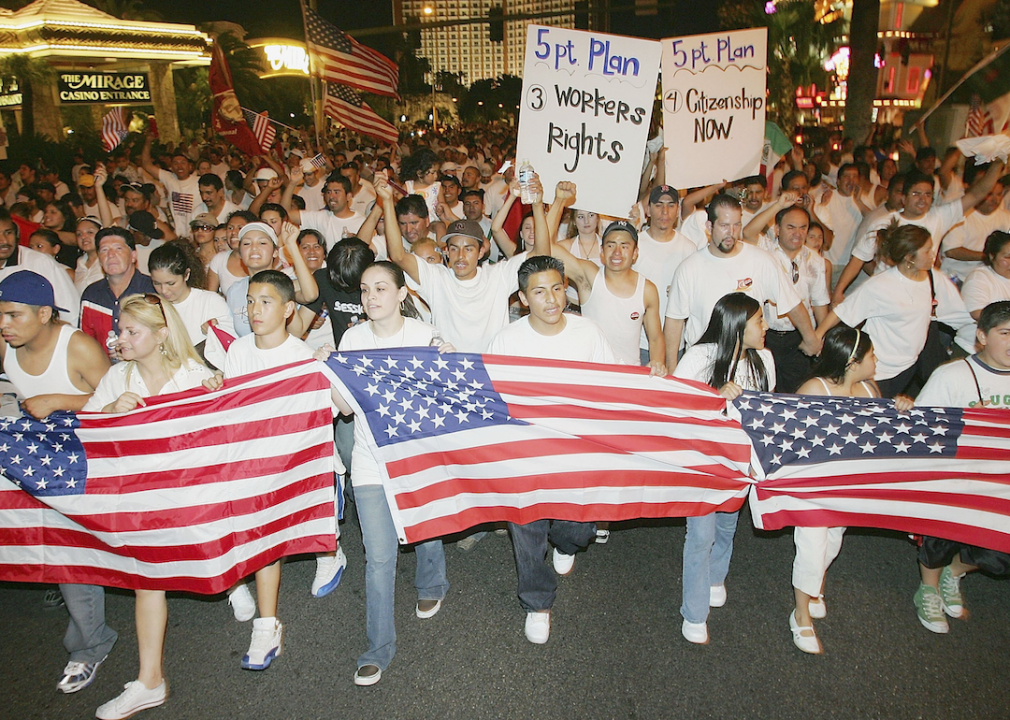
Ethan Miller // Getty Images
2006: ‘A Day Without Immigrants’ demonstrations
People holding American flags lead a crowd as they walk past The Mirage Casino Entrance.
On May 1, 2006, immigrants’ rights groups in the United States organized “A Day Without Immigrants,” one of the largest protests in the country’s history.
Students played a huge role in the protests, which saw 1 million to 2 million people marching in Los Angeles alone. In the Santa Barbara School District, roughly one-third of the student population was absent and in the Los Angeles Unified School District, 71,942 absences were reported in grades 6 through 12, accounting for 27% of the total. In Hillsborough County, Florida, about 12% of middle and high school students stayed home.
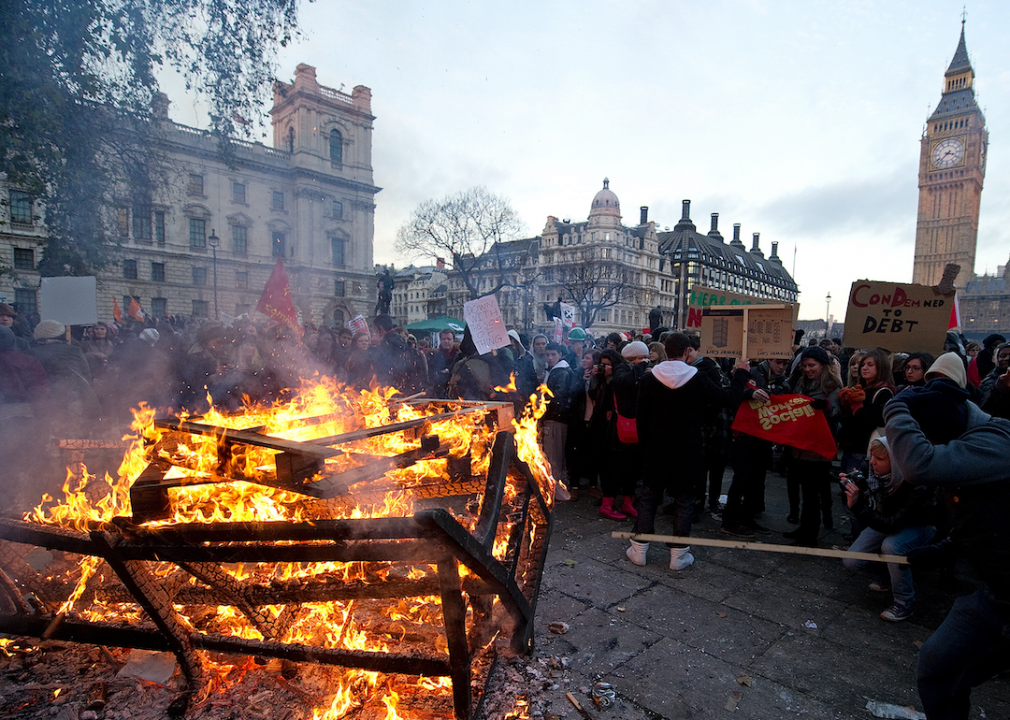
LEON NEAL // Getty Images
2010: London tuition protests
Protestors gather around a large bonfire in London.
After the United Kingdom’s coalition government announced an increase to the cap on higher education tuition fees in 2010, university students throughout the country took to the streets to protest the growing cost of education.
Some of the biggest demonstrations took place in London, where 30,000 to 50,000 students marched and chanted. Riot police showed up in Westminster amid window-smashing and bonfires and kettled some in the crowd, a move that led to later criticism. Opponents argued that the police tactic, which essentially corrals protesters into one area for long periods, put them at risk of being crushed and denied them fundamental rights to food, water, and bathroom facilities.
You may also like: 5 of the biggest gold heists you’ve never heard of
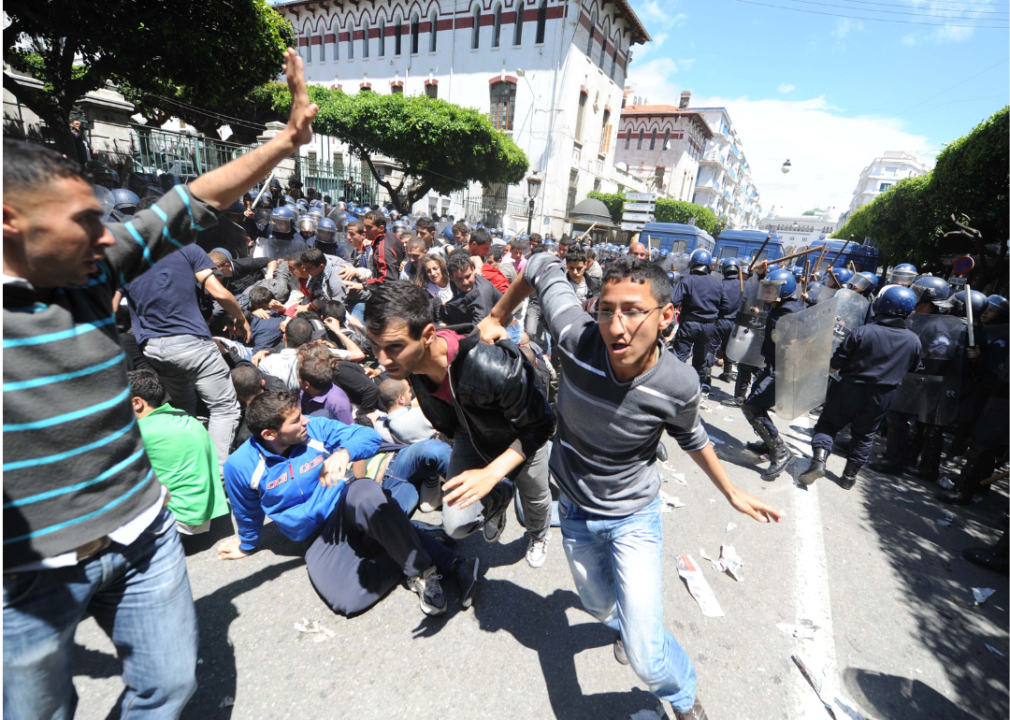
FAROUK BATICHE/AFP via Getty Images
2011: Arab Spring fueled by youth
Protestors run with some who have fallen to the ground.
Although the mass protests that broke out in numerous Middle Eastern countries in 2011 (nicknamed the “Arab Spring”) were carried out by people of all ages, students played a huge part in organizing and providing sustained momentum.
The youth movement has been credited for much of its success in countries like Egypt, Morocco, Syria, Tunisia, Libya, and Bahrain. Before the uprisings, students were also a driving force in Tahrir Square during the overthrow of Egyptian President Hosni Mubarak.
“The events of the past few months have shown us that youth can be a force for change,” author Stephanie Schwartz said at the time. “… Social media, hip hop, the arts, and comedy have all played a role in anti-regime advocacy.”
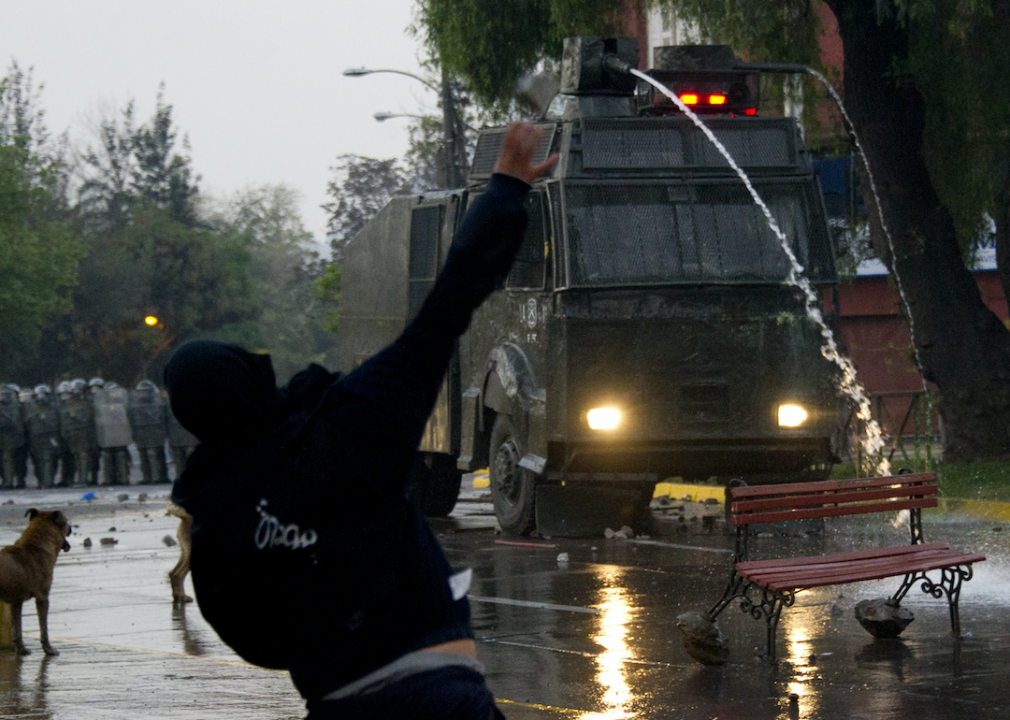
MARTIN BERNETTI // Getty Images
2011-13: Student education reform protests in Chile
A protestor with his arms up stands near a tank spraying water.
Sometimes referred to as the “Chilean Winter,” students carried out widespread protests throughout Chile between 2011 and 2013.
The demonstrations called attention to the educational system privatized in the early 1980s under the Augusto Pinochet regime. Students criticized profit-based models and advocated for free public education, clashing repeatedly with police during the two-year period during which, at times, tear gas and water cannons were employed against them.
Although the significant changes the students requested never came to fruition, they were successful in causing a shakeup in the administration, including the minister of education.
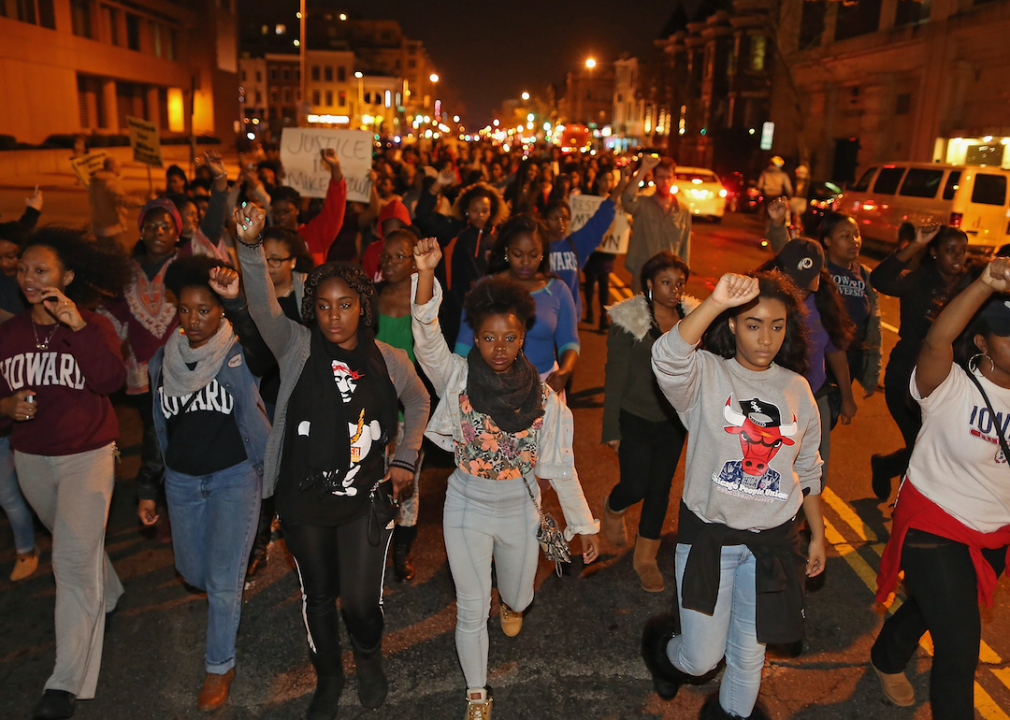
Chip Somodevilla // Getty Images
2013: Black Lives Matter demonstrations
At night, young people walk down the street with their fists in the air. One protestor in the background is holding a sign that says Justice for Mike Brown.
After the 2013 acquittal of the man who killed Trayvon Martin, an unarmed black youth shot in a Florida suburb, a wave of “I am Trayvon Martin” protests spread across the United States. In Miami-Dade County, at least 15 high schools reported student walkouts following the verdict, with other schools reporting similar protests.
The movement, which became Black Lives Matter, captured the world’s attention as news reports of police brutality and systematic racism continued to surface.
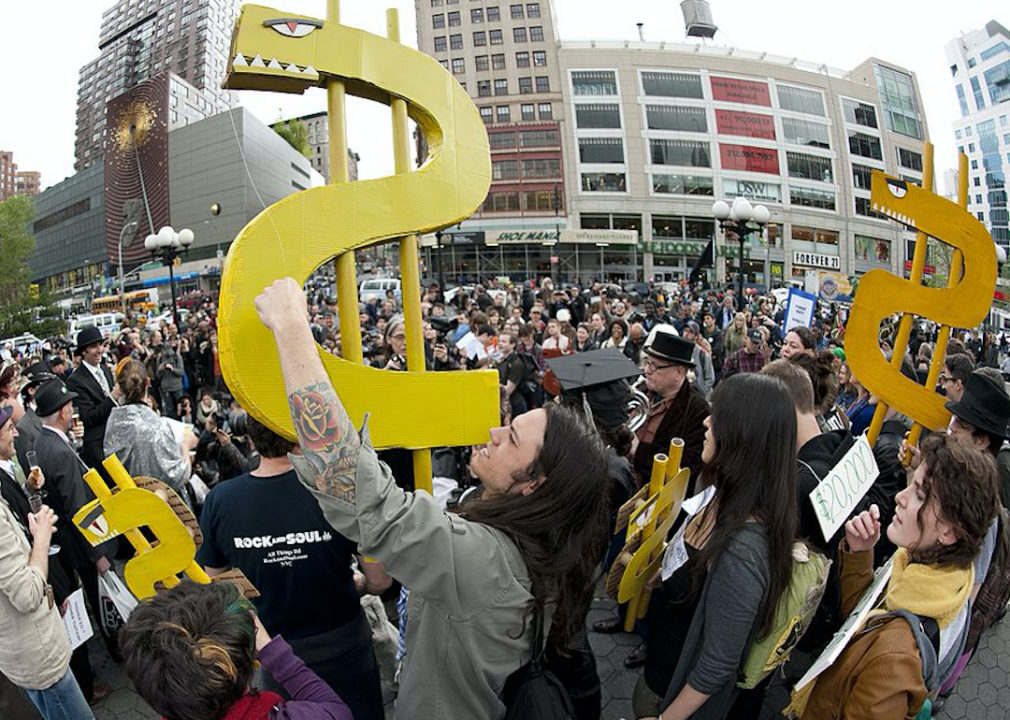
DON EMMERT // Getty Images
2013: Student debt protests at New York universities
Crowds of protestors stand in the streets with a couple of people in the foreground holding up large, yellow dollar signs with evil eyes and sharp teeth.
In the wake of the Great Recession and subsequent Occupy Wall Street demonstrations, a group of students in 2013 showed up to a small rally held by New York University’s Student Labor Action Movement (SLAM). The students were protesting the student debt incurred to attend the school. Over the next six years, SLAM continued holding rallies that grew in size, incorporating neighboring New York universities and gaining national attention.
In 2018, one student reported being threatened by a school housing official, who allegedly said his financial aid would be in jeopardy if he didn’t quit protesting. This prompted a new wave of demonstrations. The cancellation of some student debt was just one of many topics tackled in the first few months of the Biden administration.
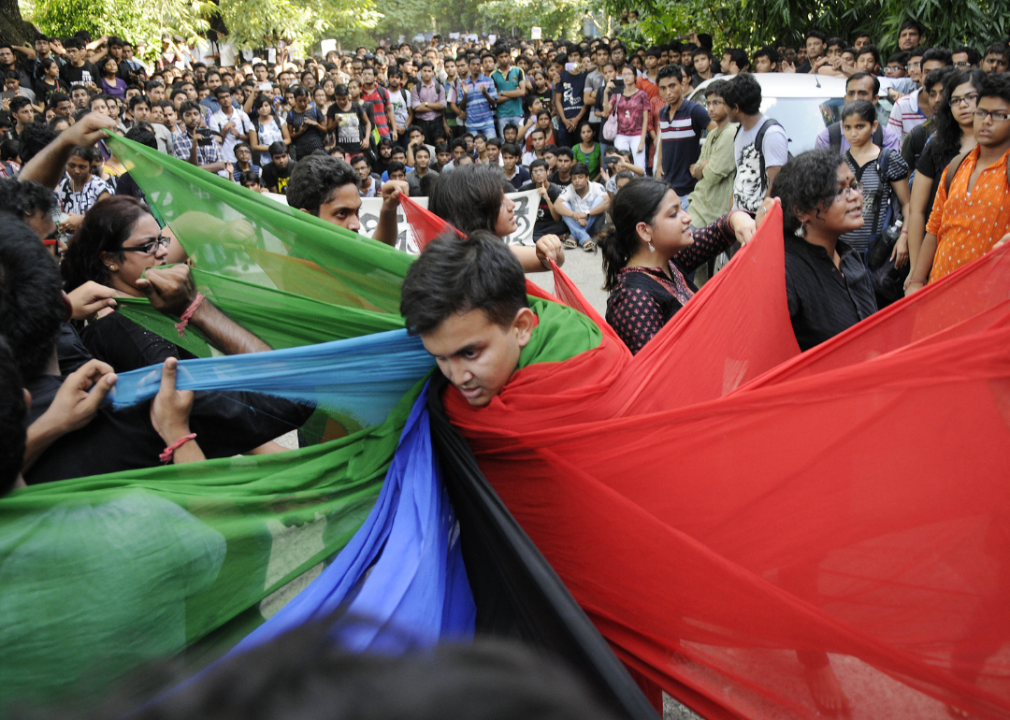
Subhankar Chakraborty/Hindustan Times via Getty Images
2014: Jadavpur University protests against sexual violence
Crowds gather in the street with a group of people wrapping one person in green, blue, red, and black fabric.
After a female student was molested on campus in 2014, students began protesting at Jadavpur University in Calcutta, India. When their requests for an investigation were not met, they encircled several administration officials, including the vice-chancellor, in a practice known as “gheraoing” (essentially encircling a person or group of people).
Police arrived and split them up violently, using batons, and allegedly molested some women protesters. The brutal police response set off another wave of protests that lasted four more months, gaining momentum via the hashtag #Hokkolorob. After some students’ “fast until death,” the vice chancellor resigned.
You may also like: These 5 states are most commonly used on fake IDs
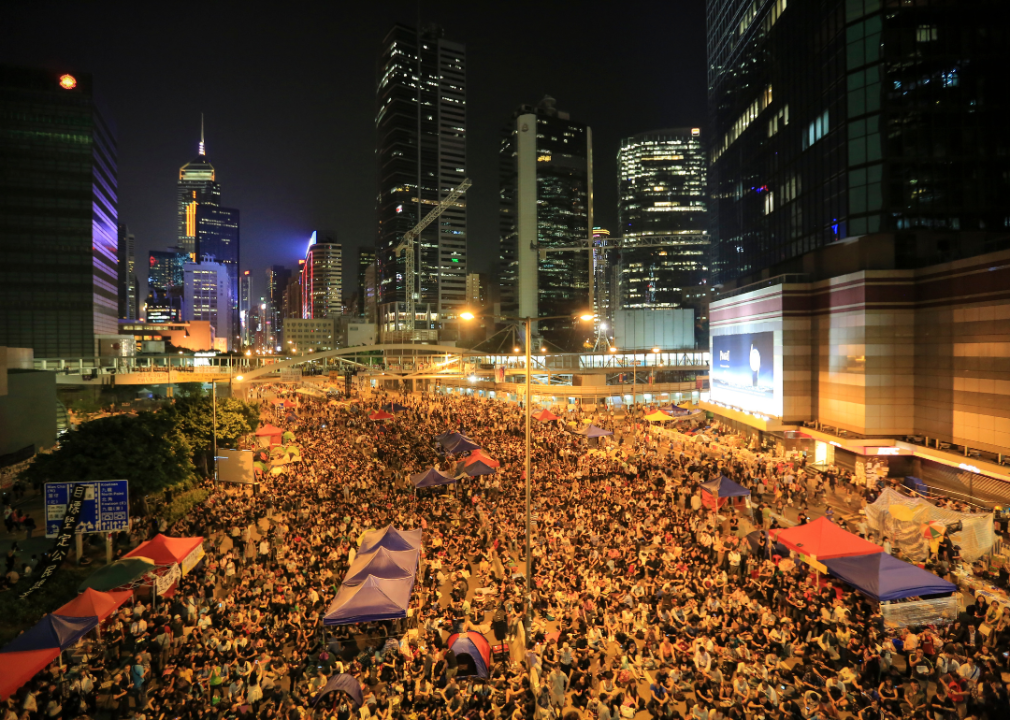
NurPhoto/NurPhoto via Getty Images
2014: Hong Kong’s Umbrella Revolution
An elevated view of a city street crammed with protestors at night.
A group of student activists in 2014 led a strike protesting China’s political overreach in an election for the city’s highest executive. Organizers set up protests outside Hong Kong’s Central Government Complex and Tamar Park while 13,000 students assembled at the Chinese University of Hong Kong.
Dense parts of the city, including Admiralty, Causeway Bay, and Mong Kok, were occupied for 79 days.
Police unleashed a brutal response that included tear gas, beatings, and alleged involvement by triad gangsters. A local news station captured a four-minute police beating of a pro-democracy Civil Party member, prompting further demonstrations and unrest.
During the clearance, protesters used umbrellas to defend themselves, and photos that emerged earned them the nickname “Umbrella protesters.” As a result of the demonstrations, Hong Kong police became more aggressive in their tactics, imprisoning numerous participants. The student movement was nominated in 2018 for a Nobel Peace Prize.
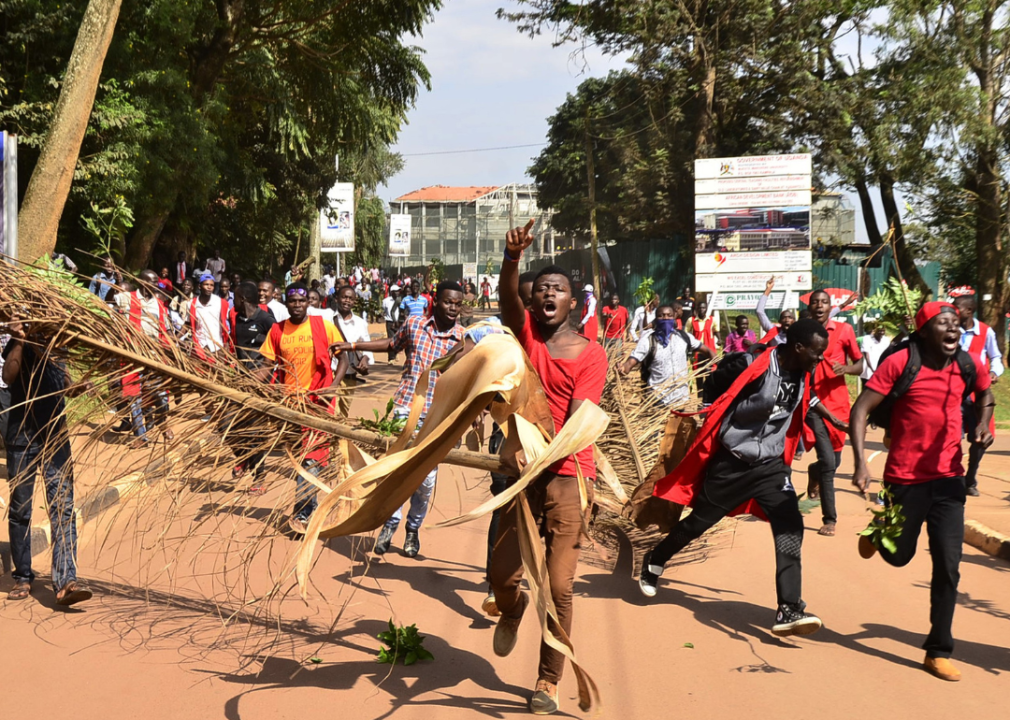
Lubowa Abubaker /Anadolu Agency/Getty Images
2016: Uganda’s Makerere University protests
Protestors walk down the street as some yell.
When lecturers went on strike over budget cuts in August 2016 at Makerere University—the “Harvard of Africa”—Uganda’s central government threatened the school with closure; however, educators voted to continue demonstrating, and many students marched in solidarity.
However, the vote angered other students, who argued that staff should seek solutions that would not force the school to shut down. Tensions escalated, and on Nov. 1, President Yoweri Museveni closed the prestigious university “indefinitely.” As this was unfolding, military police raided the home of a local king in Kasese, slaughtering more than 100 people, including children.
These separate issues converged, bringing student unrest to a new level and inciting violence and the destruction of property. The school remained closed for nearly four weeks before an agreement was reached.
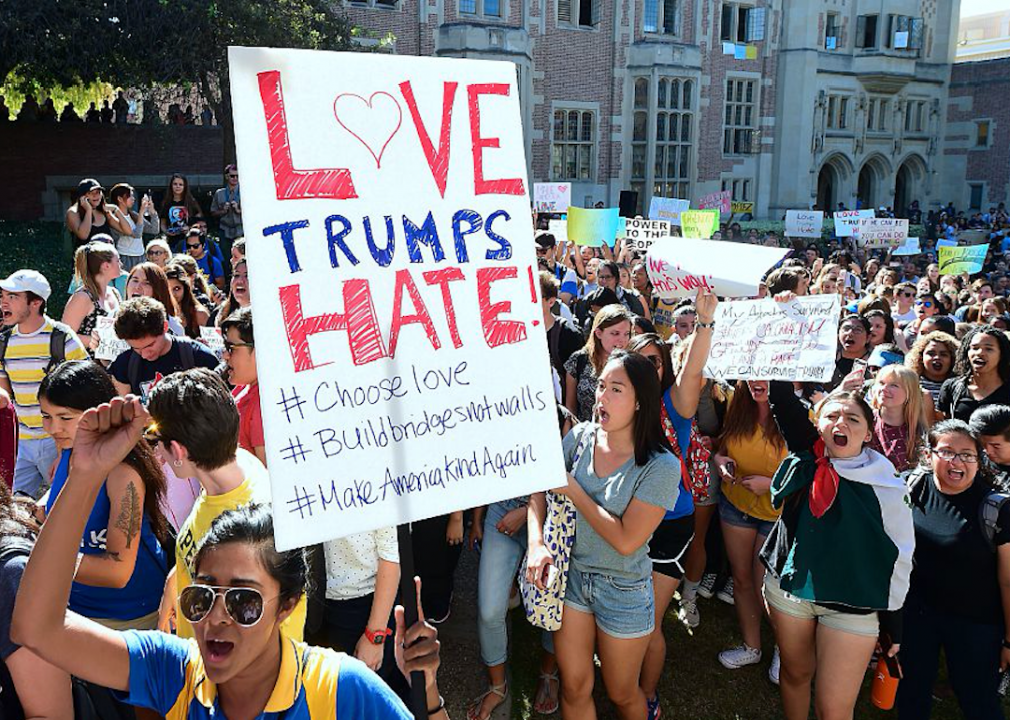
FREDERIC J. BROWN // Getty Images
2016: ‘Love Trumps Hate’ student rallies
Young people standing in crowds yell, with some holding signs, including one that says Love Trumps Hate! with three hashtags: choose love, build bridges not walls, make America kind again.
After Donald Trump was elected U.S. president in 2016, students nationwide walked out of classes and organized protests against the soon-to-be leader, who they said promoted hateful rhetoric. Using the hashtag #lovetrumpshate—a reference to one of Hillary Clinton’s campaign slogans—thousands of student marches took place throughout the country following the election.
The student protests paved the way for the post-inaugural 2017 Women’s March—the largest day of protests in U.S. history.
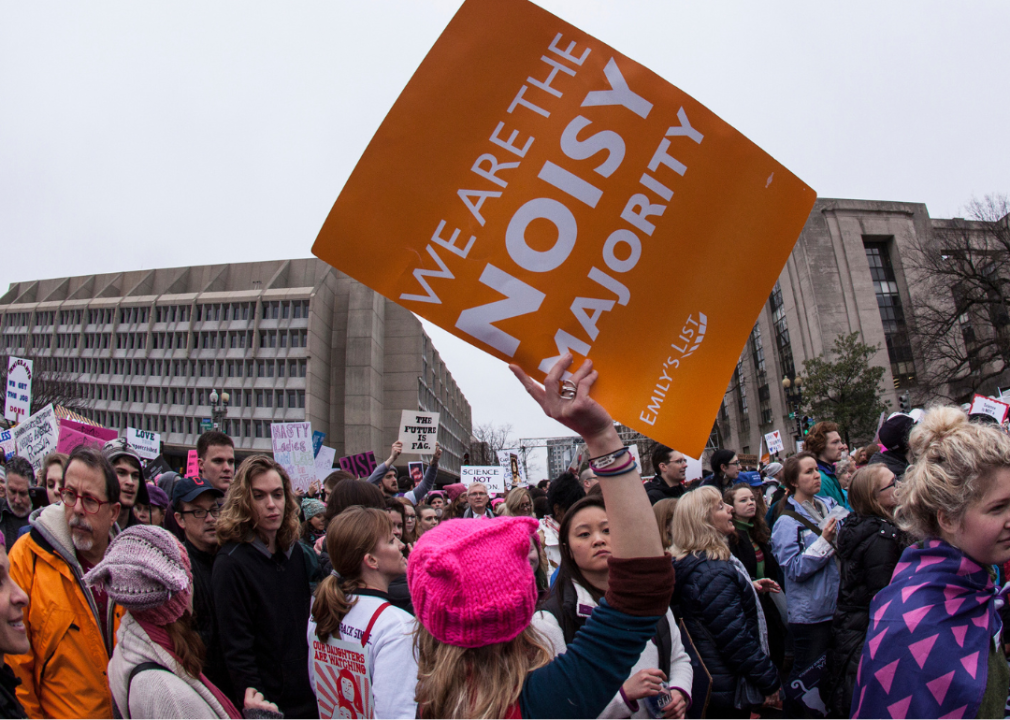
Bill Tompkins/Getty Images
2017: #MeToo movement against sexual harassment
Protestors stand with many holding signs, including one that says, we are the noisy majority, with an Emily’s List logo.
Although social activist Tarana Burke first coined the phrase in 2006, it wasn’t until actor Alyssa Milano tweeted on Oct. 15, 2017, that the #MeToo hashtag became a viral women’s movement.
The tweet, which was posted 10 days after The New York Times published a story on sexual harassment allegations against producer Harvey Weinstein, sparked student demonstrations worldwide. As allegations against other men unfolded, students harnessed the momentum of the movement, particularly on college campuses.
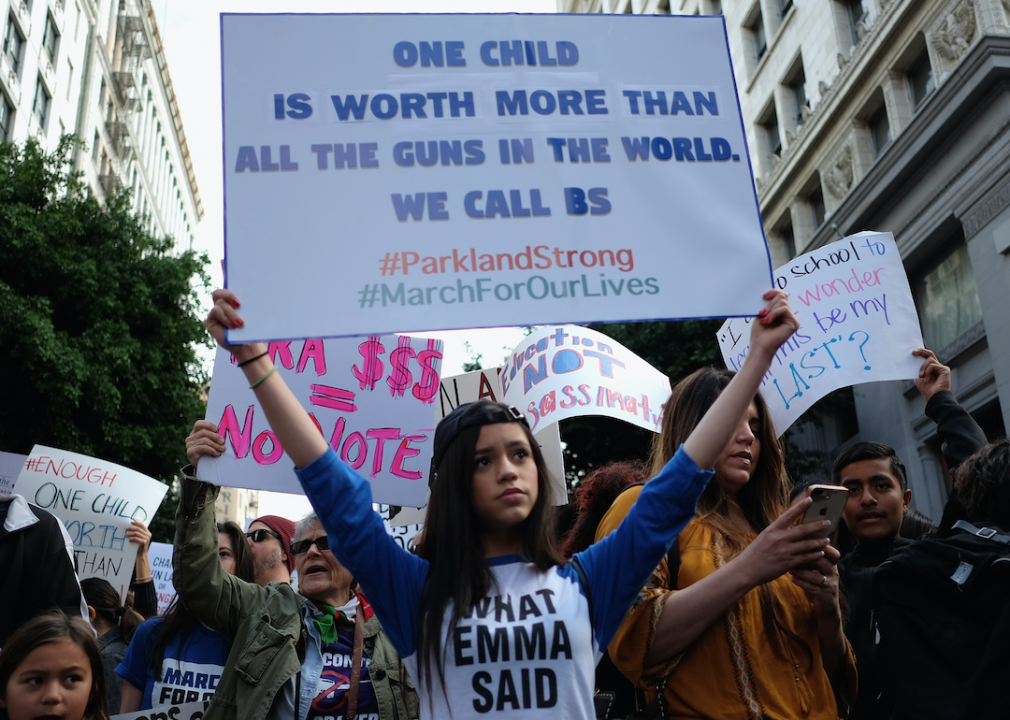
Sarah Morris // Getty Images
2018: ‘March For Our Lives’ against gun violence
Protestors hold signs, with one young person wearing a shirt that says, what Emma said, holding a sign that says one child is worth more than all the guns in the world, we call B.S., with two hashtags: Parkland Strong and March For Our Lives.
Students staged a walkout two days after a mass shooter killed 17 students at Marjory Stoneman Douglas High School in Parkland, Florida, on Feb. 14, 2018.
A tearful speech on Feb. 17 by survivor Emma González went viral, launching a nationwide student movement for gun control. Twenty students at Marjory Stoneman founded an organization called Never Again MSD and began planning a rally they dubbed “March For Our Lives.”
The event took place on March 24 in Washington D.C., along with more than 800 related marches across the United States. With a turnout of between 1 and 2 million people, it was one of the largest student-led protests since the Vietnam War.
You may also like: In-person socialization is alive in these states—here’s where people are the most social
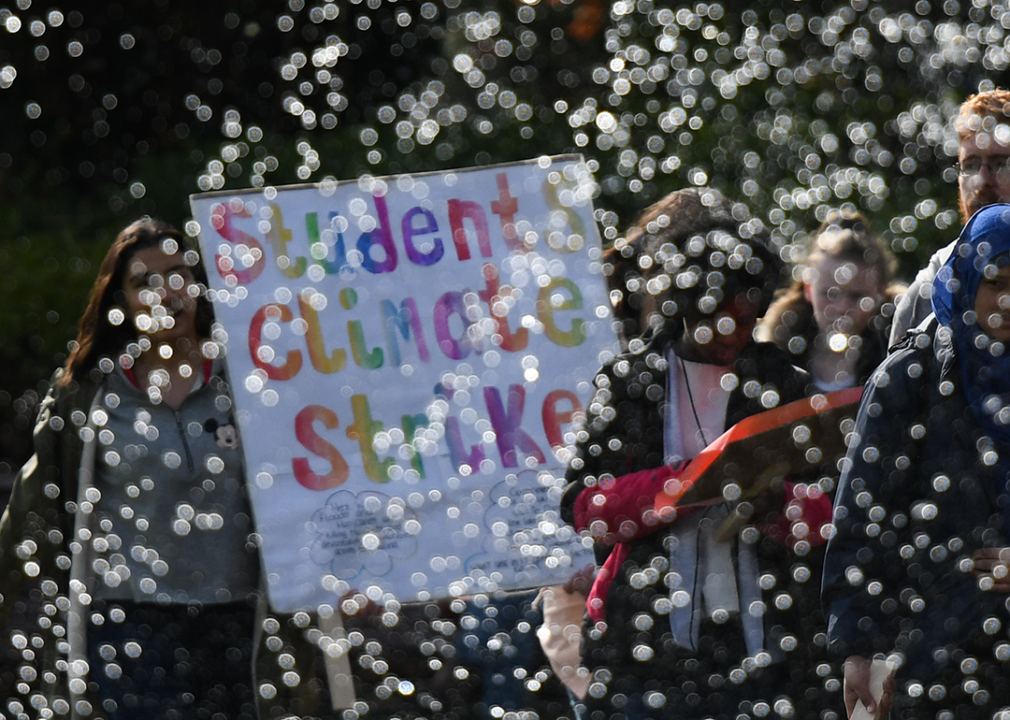
Artur Widak/NurPhoto // Getty Images
2019: Global climate strikes
A somewhat blurry photo highlights a sign that says, students climate strike.
Students were at the forefront of global climate strikes across every continent and all 50 states in 2019, inspired by Swedish then-teenage activist Greta Thunberg. Experts who study social protests noted that these protests were different than those of the past due to the cross-continental reach of student organizing.
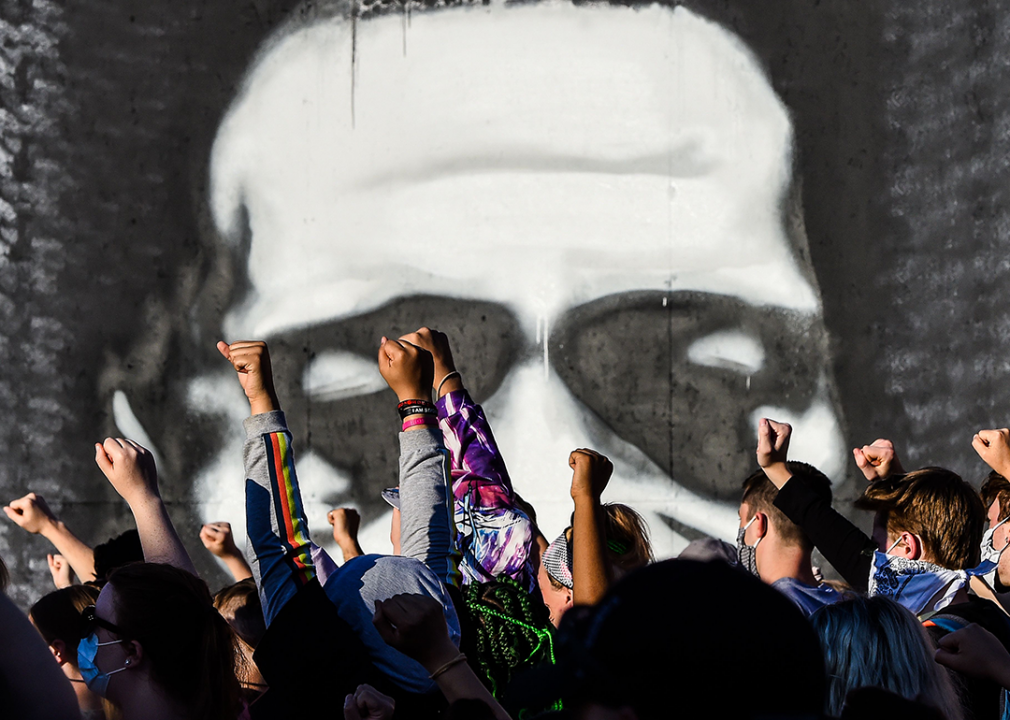
Chandan Khanna // Getty Images
2020: Protests against police brutality
Protestors, some wearing masks, stand with their fists in the air. In the background, partially obscured by people, is a large spray-painted image of a face.
Students were among those taking to the streets across the United States after a viral video showed the death of George Floyd, but those weren’t the only reactions. Because the country was also facing the coronavirus pandemic, some chose the digital realm to amplify their voices about violence instigated by law enforcement.
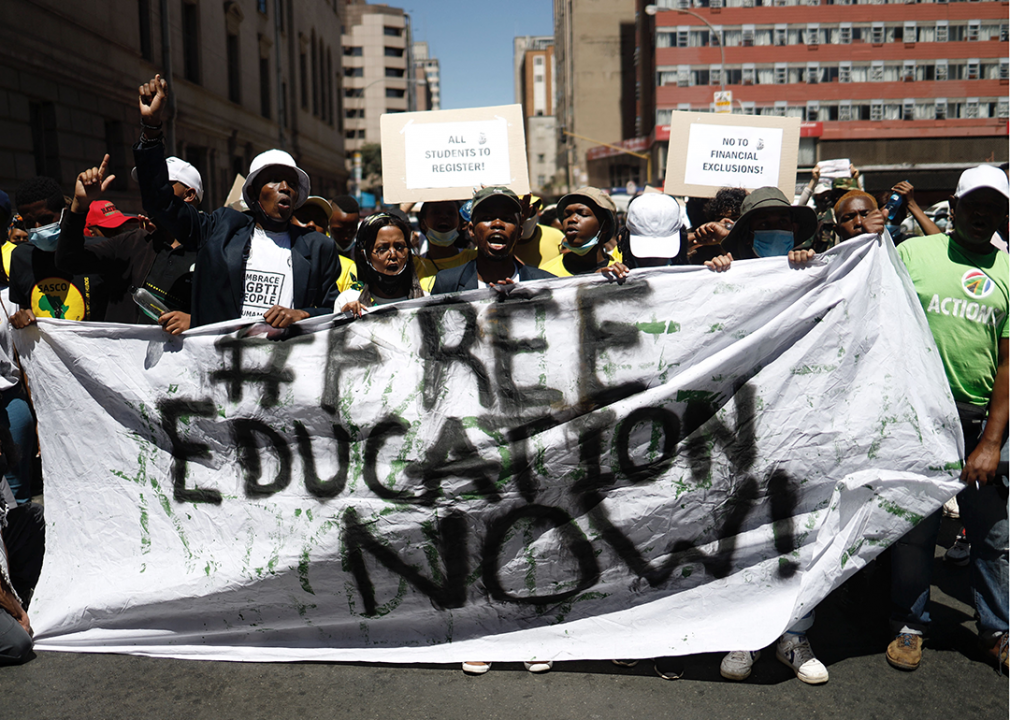
Michele Spatari // Getty Images
2021: #FeesMustFall movement in South Africa
A group of people hold a large piece of a fabric that says, # free education now. Others hold signs that say, all students to register and no to financial exclusions.
More than two decades after the end of apartheid, students in South Africa protested in 2021 to ask the government to even the playing field with free access to college and university education, to give lower-income South Africans more professional options. Protests ramped up after a passerby at one protest was killed.
